Escaping The Compliance Trap: Why 'Good Enough' Reformulation Will Sink CPG Leaders By 2028

Manmit Shrimali, CEO & Founder of Turing Labs, paving the way to revolutionize traditional R&D practices.
Consumer packaged goods (CPG) companies are facing the largest recipe rewrite in decades. From the FDA’s ban on brominated vegetable oil (BVO), which began enforcement in August 2025, to upcoming bans on additives, dyes and other substances in states such as California, Illinois and Virginia, the regulatory tsunami is only beginning.
And it’s coming faster than most R&D teams can handle.
Behind the scenes, every CPG boardroom right now should be asking these questions:
• How many of our SKUs are directly exposed to the upcoming deadlines?
• How much margin did we give away in the last three reformulations?
• Are we trapped in a reactive cycle while competitors are building faster, healthier portfolios?
If you don’t have a clear answer, your organization is already in the compliance trap. Here’s what it means.
The Compliance Trap
As ingredient bans take hold, companies will do what they’ve always done: scramble SKU by SKU. Swap out a banned dye. Cut sugar just enough to pass the new standard. Ship. Move on.
That’s the compliance trap—when “good enough” works for now but sets companies up for failure in future markets.
On the surface, the trap looks like success: “We complied!” In reality, it’s margin leakage, brand dilution and missed innovation.
Here’s what companies are risking:
• Margin Erosion: In our experience working with CFOs, margin erosion is often their top worry. And for good reason. Reformulation often means costlier inputs. With ingredients representing the largest share of cost of goods sold in formulated products, according to our own experience and research, every cost-increasing substitution made purely for regulatory compliance erodes profit margins.
• Performance Hits: There are well-known industry horror stories about sales dropping after a reformulation. Loyal consumers notice when taste, texture or efficacy changes. They don’t want their favorite cereal or soup to change, and when it does, they stop buying. It’s the stuff earnings call nightmares are made of.
• Innovation Gridlock: According to Mintel's Global New Product Database, the majority of R&D effort today is tied up in renovation and reformulation rather than creating new products. While competitors launch the next blockbuster, companies’ best scientists are stuck playing defense instead.
Regulations create interpretation challenges that multiply across dimensions. Take just one example: A formula claims to be "natural." But that definition varies by category, product and region.
At Turing Labs, we realized this problem early and built features around it. But it illustrates how even basic regulatory compliance requires sophisticated, labor-intensive interpretation work that scales exponentially across portfolios.
The R&D Resilience Playbook
Escaping this trap requires a fundamental shift from reactive, SKU-by-SKU fixes to proactive, portfolio-level optimization. Here’s the playbook to follow:
1. Audit your portfolio exposure.
Map every SKU against upcoming deadlines, such as for BVO (2025), additives bans (2027) and “healthy” criteria (2028). Quantify the hidden costs of past reformulations: margin hits, consumer complaints and lost claims. This creates a true “shelf risk score.”
2. Break the silos.
Reformulation isn’t an R&D-only problem. Compliance deadlines demand cross-functional mandates, with R&D, marketing, regulatory, supply chain and finance teams aligned from day one. Define success across the company as more than just “compliance.”
3. Move from SKU to portfolio optimization.
Manual swaps don’t scale. You need multiconstraint optimization that balances cost, compliance and supply at the portfolio level. AI platforms can model thousands of scenarios in hours instead of months, turning constraints into options.
4. Build compounding capability.
Every reformulation should make the next one faster. Capture learnings, data and ingredient trade-offs into a reusable system. Over time, your R&D agility compounds, turning regulation into a speed advantage competitors can’t match.
From Compliance Cost To Competitive Weapon
I believe that the next three years will separate CPG leaders from laggards. Those who stay in the trap could pay more for compliant ingredients and stall innovation pipelines, all while losing consumer trust with underperforming products. But those who escape can cut costs while staying compliant, win loyalty with consistent performance and outpace rivals with faster, smarter launches.
We've seen this firsthand. Some companies have reactive teams that troubleshoot problems as they arise. Proactive teams convert regulatory challenges into competitive opportunities. This mindset shift is the foundation of modern R&D transformation.
The question for every CPG executive is: Are you trapped in “good enough?” Or are you ready to turn reformulation into your next competitive weapon?

